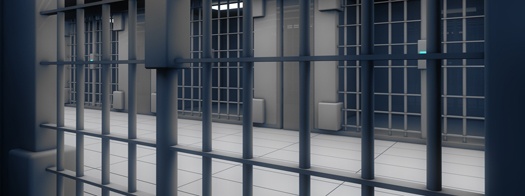
In September 2017, we told the story of Agnes Gund, the banking heiress who sold a Roy Lichtenstein masterpiece for $165 million and donated the proceeds to the Art for Justice Fund she founded. The purpose was to “do something about” the mass incarceration of minor drug offenders that filled American jails with 2.3 million people and distinguished the U.S. as the jailor of more of its citizens than any other country on earth.
The feedback from caseworkers has been enlightening. They informed us that although an astounding 2.3 million U.S. citizens were indeed incarcerated in 2015, more than 7 million people were under the supervision of the U.S. correctional systems. Four and a half million were supervised in the community on either probation or parole. More than 641,000 people were released from state or federal prisons in 2015, and an average of 590,400 have been released annually since 1990. State spending on corrections ballooned from $6.7 billion in 1985 to $56.9 billion in 2015.
Previously Incarcerated Individuals
The old hard-edged “ex-con” designation has given way to the more politic “formerly incarcerated individuals” or “previously incarcerated individuals” or, the least offensive of all, “returning citizens”. Although we use softer language in our designation of citizens released from incarceration, the truth about their re-entry into society is still hard.
Why a Revolving Door?
- Unfortunately, formerly incarcerated individuals often get arrested again. A Bureau of Justice Statistical Study of prisoners released in 30 states in 2005 found that two-thirds were arrested again within three years of release, and three-quarters were re-arrested within five years.
- Case workers tell us that the stress incarcerated individuals face every day seems to intensify when they are about to be released. “They’re going from an environment where they’re making very limited decisions to one where they’re making all the decisions. They need help but often there is no one there to help. Case workers are overwhelmed by the sheer numbers, and funding is comparatively limited. It’s pretty hard to make a case for more funding to help the recently released when the state is already spending $56 billion on corrections. The public is just not ready to further support people convicted of committing crimes against them. That’s how they see it, and it’s understandable.”
- Finding employment for the recently released is another challenge. Many employers will not hire people with criminal records. Often when formerly incarcerated individuals do find jobs, those positions may not pay a living wage or employers may exploit the leverage they have over these employees and subject them to harsh working conditions and excessive working hours.
- Closely related to employment is housing. If a person coming out of prison is unable to stay with family or friends, it can be difficult to find a place to live that provides enough stability to maintain employment.
- Many formerly incarcerated people also face challenges with mental health and/or addiction
- There are also certain legal barriers that make it difficult for the formerly incarcerated to reenter society. In some states, felons can’t buy food stamps or qualify for welfare. They also are quite limited by certain parole restrictions.
Some Final Thoughts
The criminal justice crisis began with mandatory sentencing guidelines and the so-called war on drugs. Criminalizing drug use and taking sentencing discretion out of the hands of the judges we have trusted with administering justice has rendered so-called punishment, in a great many cases, hypocritical and dishonest at bottom, and thus at constant war with abstract justice and common sense. The modern judge must forever oscillate absurdly between fine and imprisonment – in other words, between allowing one prisoner to pay a bribe for his liberty and taking away the liberty of another prisoner because he hasn’t got the bribe.
Once we lock people away for non-violent and often victimless crimes we are the agents of our own demise. We are inspiring criminal conduct by incubating “criminals” in our lock-ups and then forcing them to revert to their newly-acquired criminal survival skills by making it almost impossible for them to survive by cooperating with an insincere system. Our criminal justice system needs to be re-imagined from top to bottom or this endless cycle will spin out of control.

